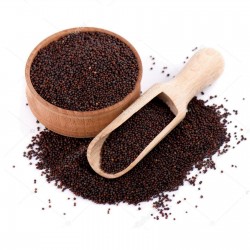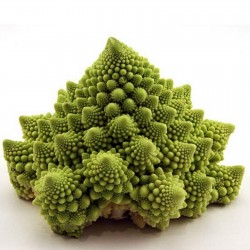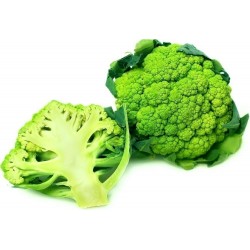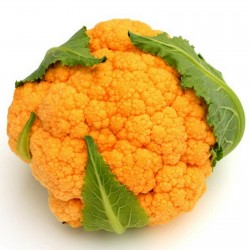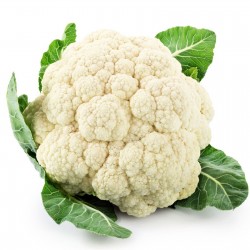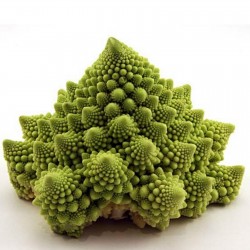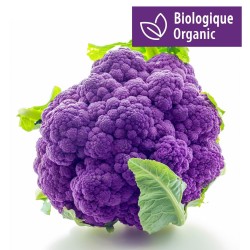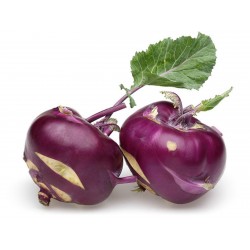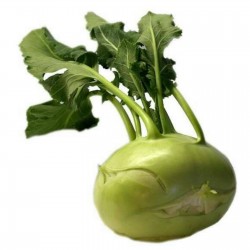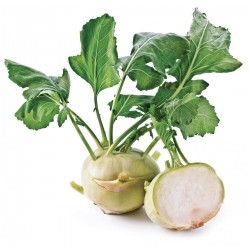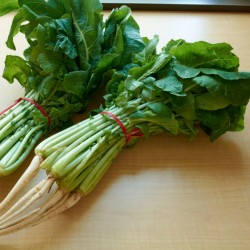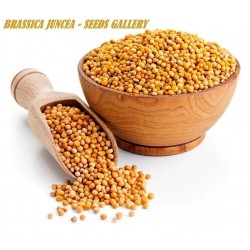
Насіння Гірчиця салатна,...
Ціна
1,35 €
SKU: MHS 131
Seeds Gallery Com,
5/
5
<h2><strong>Насіння Гірчиця салатна, гірчиця сарепська (Brassica juncea)</strong></h2>
<h2><span style="color: #ff0000;"><strong>Ціна за упаковку 180 (1г), 900 (5г) насіння.</strong></span></h2>
<p style="color: #202122; font-size: 14px;"><b>Гірчиця салатна</b>, або<span> </span><b>гірчиця сарепська</b><span> </span>(<i>Brassica juncea</i>, syn. Sinapis juncea L.) — однорічна салатна рослина<span> </span>родини<span> </span>капустяних. Гірчиця салатна скороспіла холодостійка рослина. В умовах довгого дня в спекотну погоду у рослин рано з'являються квіткові стебла, листя стає грубими. Росте на легких супіщаних і суглинних ґрунтах.</p>
<h2 style="color: #000000; font-size: 1.5em;"><span class="mw-headline" id="Хімічний_склад">Хімічний склад</span></h2>
<p>Її листя містять до 4 мг%<span> </span>каротину, до 80мг%<span> </span>аскорбінової кислоти, до 2 —<span> </span>рутина, до 0,8 — вітаміну В<sub>1</sub>, 0,17 — вітаміну В<sub>2</sub>, 0,7 мг% вітаміну РР<sup id="cite_ref-Советы_по_ведению_приусадебного_хозяйства_/_Ф.Я._Попович,_Б.К._Гапоненко,_Н.М._Коваль_и_др.;_Под_ред._Ф.Я.Поповича._—_Киев_:_Урожай,_1985.—_с.664,_ил._1-0" class="reference">[1]</sup>. З мінеральних елементів найбільше накопичується заліза, кальцію і магнію.</p>
<h2 style="color: #000000; font-size: 1.5em;"><span id=".D0.97.D0.B0.D1.81.D1.82.D0.BE.D1.81.D1.83.D0.B2.D0.B0.D0.BD.D0.BD.D1.8F"></span><span class="mw-headline" id="Застосування">Застосування</span></h2>
<p>Листя використовують в свіжому вигляді для салатів як гарнір до різних м'ясних і рибних страв, як<span> </span>шпинат<span> </span>у вареному вигляді. Молоді соковиті стебла<span> </span>солять<span> </span>і консервують. З проростків гірчиці готують салат або гостру приправу для бутербродів.</p>
<p>Насіння служить промисловою сировиною для виробництва<span> </span>гірчичної олії<span> </span>та<span> </span>гірчичників.<br>Гірчичники — шматки паперу стандартного розміру (8 x 12,5 см) з нанесеним (за допомогою каучукового клею) шаром гірчичного порошку. Гірчичники є типовим відволікаючим засобом при запальних процесах і ревматизмі.</p>
<h2 style="color: #000000; font-size: 1.5em;"><span id=".D0.92.D0.B8.D1.80.D0.BE.D1.89.D1.83.D0.B2.D0.B0.D0.BD.D0.BD.D1.8F"></span><span class="mw-headline" id="Вирощування">Вирощування</span></h2>
<p>Вирощують гірчицю салатну як самостійну культуру або як ущільнювач у відкритому і захищеному ґрунті з міжряддям 45 і 25 см. На 1 м² потрібно 6 г насіння<sup id="cite_ref-Советы_по_ведению_приусадебного_хозяйства_/_Ф.Я._Попович,_Б.К._Гапоненко,_Н.М._Коваль_и_др.;_Под_ред._Ф.Я.Поповича._—_Киев_:_Урожай,_1985.—_с.664,_ил._1-1" class="reference">[1]</sup>. Через 85-30 днів після посіву рослини досягають збиральної стиглості<sup id="cite_ref-Советы_по_ведению_приусадебного_хозяйства_/_Ф.Я._Попович,_Б.К._Гапоненко,_Н.М._Коваль_и_др.;_Под_ред._Ф.Я.Поповича._—_Киев_:_Урожай,_1985.—_с.664,_ил._1-2" class="reference">[1]</sup>. Листя прибирають вибірково. Повторюючи посів через кожні 10 — 15 днів, можна мати зелень цілий рік.</p>
<p>Добре вдається в зимовий час в захищеному ґрунті або в ящиках на підвіконні. Висіяне насіння проростає на 3-й день, а через 18-20 днів уже можна прибирати ніжні листи<sup id="cite_ref-Советы_по_ведению_приусадебного_хозяйства_/_Ф.Я._Попович,_Б.К._Гапоненко,_Н.М._Коваль_и_др.;_Под_ред._Ф.Я.Поповича._—_Киев_:_Урожай,_1985.—_с.664,_ил._1-3" class="reference">[1]</sup>.</p>
<p>Щоб отримати насіння, рослини не забирають на продовольчі цілі. Вони утворюють генеративні пагони, цвітуть і дають насіння. До збирання приступають у період воскової стиглості. Урожайність насіння становить 200 г з 1 м²<sup id="cite_ref-Советы_по_ведению_приусадебного_хозяйства_/_Ф.Я._Попович,_Б.К._Гапоненко,_Н.М._Коваль_и_др.;_Под_ред._Ф.Я.Поповича._—_Киев_:_Урожай,_1985.—_с.664,_ил._1-4" class="reference">[1]</sup>.</p>
<table cellspacing="0" cellpadding="0" border="1">
<tbody>
<tr>
<td colspan="2" width="100%" valign="top">
<p><span style="color: #008000;"><strong>Sowing Instructions</strong></span></p>
</td>
</tr>
<tr>
<td valign="top" nowrap="nowrap">
<p><span style="color: #008000;"><strong>Propagation:</strong></span></p>
</td>
<td valign="top">
<p><span style="color: #008000;">Seeds</span></p>
</td>
</tr>
<tr>
<td valign="top" nowrap="nowrap">
<p><span style="color: #008000;"><strong>Pretreat:</strong></span></p>
</td>
<td valign="top">
<p><span style="color: #008000;">0</span></p>
</td>
</tr>
<tr>
<td valign="top" nowrap="nowrap">
<p><span style="color: #008000;"><strong>Stratification:</strong></span></p>
</td>
<td valign="top">
<p><span style="color: #008000;">0</span></p>
</td>
</tr>
<tr>
<td valign="top" nowrap="nowrap">
<p><span style="color: #008000;"><strong>Sowing Time:</strong></span></p>
</td>
<td valign="top">
<p><span style="color: #008000;">all year round</span></p>
</td>
</tr>
<tr>
<td valign="top" nowrap="nowrap">
<p><span style="color: #008000;"><strong>Sowing Depth:</strong></span></p>
</td>
<td valign="top">
<p><span style="color: #008000;">1 - 1,5 cm</span></p>
</td>
</tr>
<tr>
<td valign="top" nowrap="nowrap">
<p><span style="color: #008000;"><strong>Sowing Mix:</strong></span></p>
</td>
<td valign="top">
<p><span style="color: #008000;">Coir or sowing mix + sand or perlite</span></p>
</td>
</tr>
<tr>
<td valign="top" nowrap="nowrap">
<p><span style="color: #008000;"><strong>Germination temperature:</strong></span></p>
</td>
<td valign="top">
<p><span style="color: #008000;">18-20 ° C</span></p>
</td>
</tr>
<tr>
<td valign="top" nowrap="nowrap">
<p><span style="color: #008000;"><strong>Location:</strong></span></p>
</td>
<td valign="top">
<p><span style="color: #008000;">bright + keep constantly moist not wet</span></p>
</td>
</tr>
<tr>
<td valign="top" nowrap="nowrap">
<p><span style="color: #008000;"><strong>Germination Time:</strong></span></p>
</td>
<td valign="top">
<p><span style="color: #008000;">1-4 weeks</span></p>
</td>
</tr>
<tr>
<td valign="top" nowrap="nowrap">
<p><span style="color: #008000;"><strong>Watering:</strong></span></p>
</td>
<td valign="top">
<p><span style="color: #008000;">Water regularly during the growing season</span></p>
</td>
</tr>
<tr>
<td valign="top" nowrap="nowrap">
<p><span style="color: #008000;"><strong> </strong></span></p>
</td>
<td valign="top">
<p><br><span style="color: #008000;"><em>Copyright © 2012 Seeds Gallery - Saatgut Galerie - Galerija semena. </em><em>All Rights Reserved.</em></span></p>
</td>
</tr>
</tbody>
</table>
<script src="//cdn.public.n1ed.com/G3OMDFLT/widgets.js"></script>
MHS 131 (1g)





